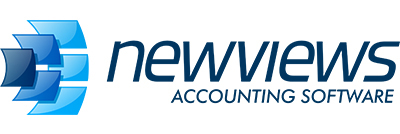NV2 is now facing EXACTLY the same reaction NV1 prompted. NV1 was, and still is, a complete departure from the norm. It offered a different way to organize and manage accounting data. Some people took to it immediately, but most took some time to get used to it. The users that did stick with it soon experienced a few key “ah ha” moments when everything came into place.
NV2 is very different, at first glance, but NV1 users should quickly recognize their own converted books and come over the initial hump. The biggest source of confusion seems to be NV2’s separation of accounts and reports. In NV1 all accounts were on a report, and nowhere else. In NV2, all accounts are typed (e.g. BANK, AR, AP, etc.) and can appear in two places – on a report just as in NV1, and in a folder of all accounts of a particular type. If you convert a set of books and go to the NV2 report folder, you will find all of your NV1 reports (exact duplicates). From the reports down, the converted NV2 books are identical to the original NV1 books.
Let’s examine the reason for separating accounts from reports. NV1 had an internal file of all accounts in the books, and these accounts could only be seen on reports. NV1 accounts used the notes views to store additional information in an ad hoc way. This additional information allowed NV1 procedures to process accounting activity with some intelligence (e.g. calculating sales taxes for invoices).
NV2 has exposed this internal file as folders of different types of accounts. This allowed us to take the ad hoc information off the notes view and build intelligence directly into the accounts. NV2 transactions are processed automatically, without the need to run procedures. We feel this is a clear benefit, and something new NV2 users get used to very quickly.
Another potential source of confusion is the presence of journals in NV2. In NV1 the only way to manage a “journal” was to add an account and use it as a journal (i.e. post to accounts in the books of final entry, bringing the journal account balance back to zero for every transaction). Talk about confusing! Many people in the accounting profession never accepted this, so journals were included in NV2. You can enter transactions in journals, specifying the accounts to post to, or you can enter transactions to accounts (just like in NV1), and select the journal to record the transaction in. We now have the best of both worlds.
As for the original license agreement, it has been replaced with a new, far less restrictive version. The requirement to register the program annually has been removed, and the requirement to register databases has also been removed. The only restriction remaining is the requirement to register/activate once at the time of initial purchase. Please download and install service pack 1, no re-registration is required.
A point to note about the NV2 license agreement… We like to think we have the right to be paid for our product, and now, even with a greatly relaxed registration/activation, we have some assurance that we will be paid. For the past 20 years we have been selling versions of NV1. Though it is difficult to be certain, our best estimate is that for every legitimate copy we sold, more that 100 copies were stolen and/or used in violation
of our NV1 license agreement. NV1 licensing was largely based on an honor system, and it didn’t work. Q.W. Page has millions of dollars invested in NV2, mostly coming from shareholders and sacrifices made by employees. We think one phone call to register NV2 is fair.
